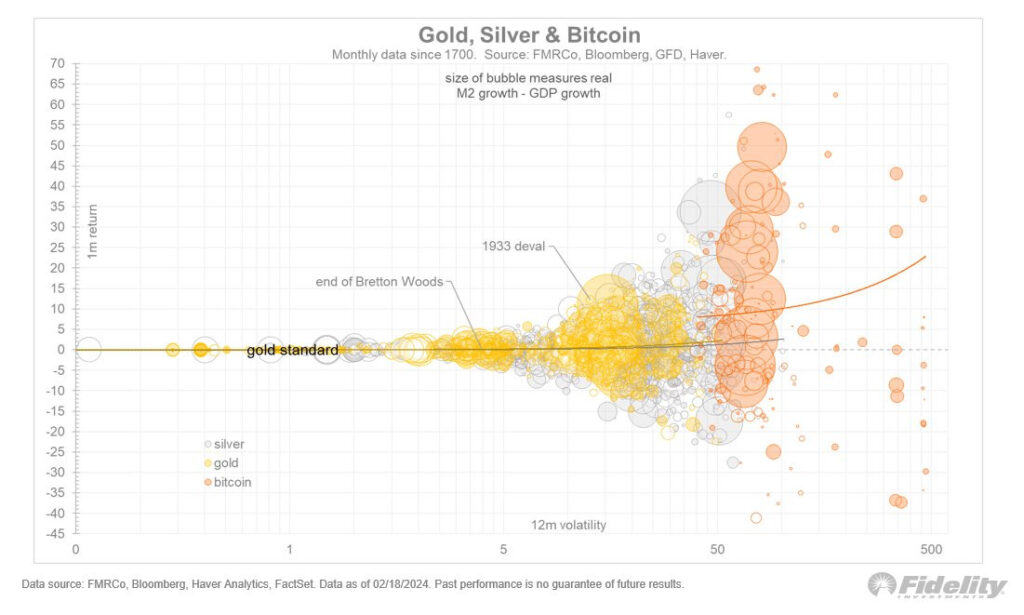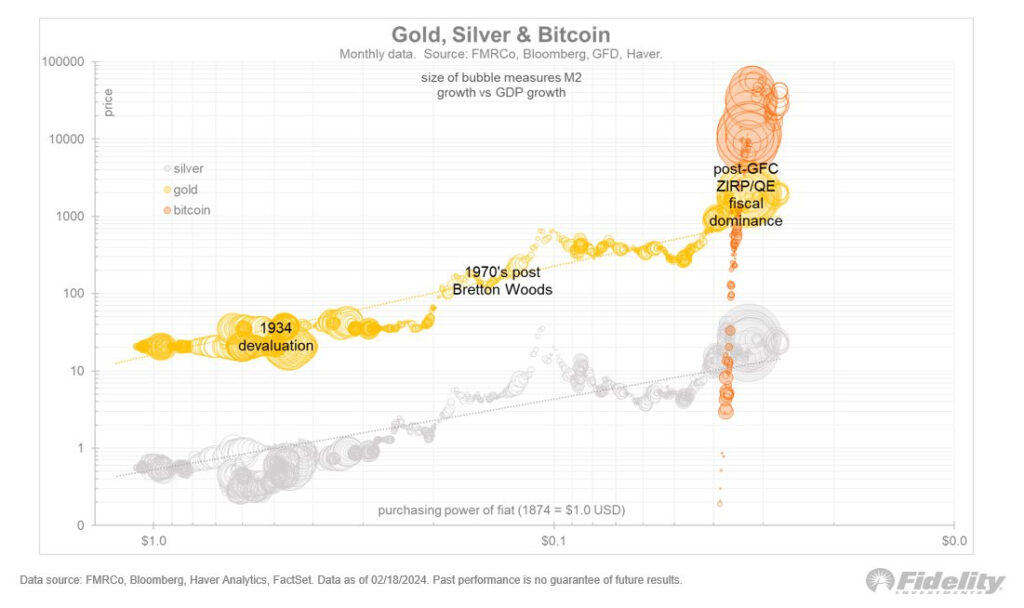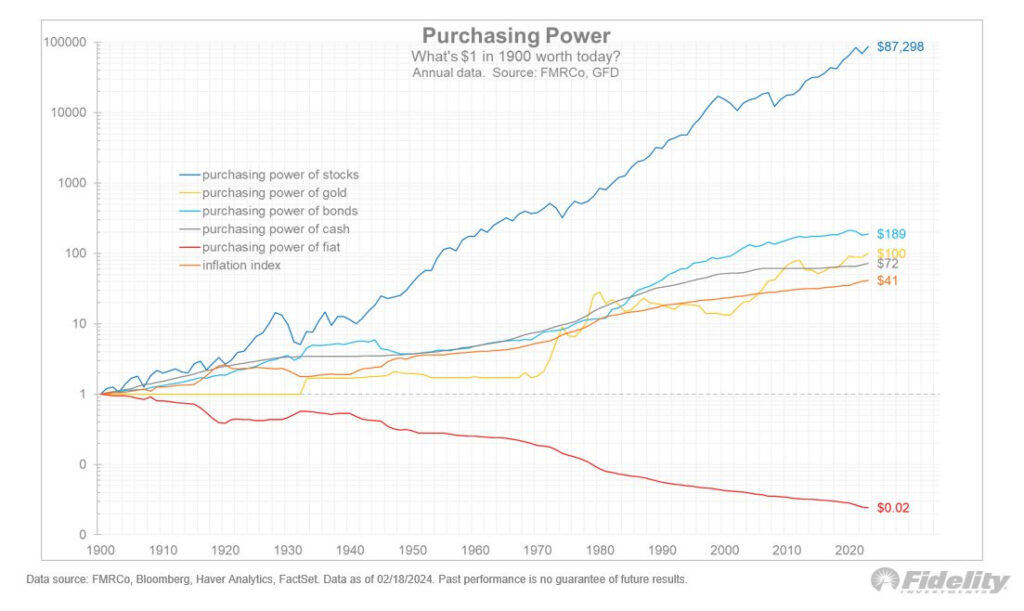Recently, Fidelity’s Director of Global Macro, Jurrien Timmer, shared his perspective on Bitcoin, comparing it to “exponential gold.” In a bid to explain this, Timmer explored his supply-side thinking, which takes a different angle from the one used in the stock-to-flow (S2F) concept; he deviated from his other research on Bitcoin that was primarily demand-oriented, where he made use of S-curves for designing a demand-based valuation model.
In a comprehensive thread, he presented a chart from 1700 to the present showing the price swings of gold, silver, and bitcoin against their annual volatilities for twelve months at a time. However, until 1970, gold’s price remained fixed under various monetary systems such as the gold standard and Bretton Woods arrangement. Nevertheless, since the Fiat Era started in 1970, volatility in gold was simply a reflection of changing money policies as well as inflationary environments.

Timmer indicated that “excess money” is important by showing it on a graph where the size of dots represents how much faster the money supply is growing than GDP. Towards the right side of the graph are larger dots representing the pandemic/post-pandemic era, indicating marked oscillations in monetary dynamics.
Besides, Timmer has also given a historical perspective by showing the price of gold, silver, and Bitcoin with the horizontal axis representing the purchasing power of fiat currencies in the past 150 years. While gold and silver are known to have a gradual upward trend as expected from stores of value, Bitcoin’s dramatic rise is strikingly different from others, thereby signaling an aspect that Timmer would wish to study in more detail in subsequent threads.

Purchasing Power Over Time: Fiat vs. Bitcoin
On top of that, Timmer questioned the dominant narrative that retaining fiat currency simply leads to a loss of purchasing power. According to him, even though fiat may depreciate during periods of negative real rates or when it takes time for bank deposit rates to adjust fully with market rates, using such money wisely such as earning overnight interest rates can protect against inflationary erosion.
To emphasize his point, Timmer showed a chart of how much one dollar has been worth from 1900 till now. The chart in red line shows how it would maintain if left idle as opposed to when it was earning overnight interest (in grey) or put into gold (gold). The data have shown that both Gold and Overnight Money have generally kept up with inflation, thus emphasizing the importance of strategic financial management to preserve purchasing power over time.

All in all, Timmer’s analysis presents a fine-grained view of Bitcoin’s ability to be used as an asset that holds value. The analysis explains the role played by its bitcoin dynamics and its relationship with conventional monetary assets in this regard.
Related Reading | Ethereum’s Vitalik Buterin Supports Improving Basic Blockchain Features
